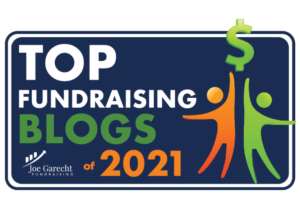Board of Directors. Whether you have an advisory board or a full board of directors governing your social profit organization, having an exceptional board can be a hope, and a wish and dream for many.
I work closely with many organizations across the country each year and I often find that the time put into recruiting and orienting new board members is dismally inadequate.
I’ve added to a great list found in the article Recruiting for Board Members. Process? What Process? by colleague Hildy Gottlieb to give you a simple framework to guide you and your leadership to create an exceptional board.
- Step One: Define what you are looking for.
Things to consider: Level of passion, willingness to commit time for meetings, planning sessions, special events and what specific talents and skills will make your board stronger? Click here to see a sample matrix to help better define your needs. - Step Two: Recruit a pool of candidates for each board seat.
Having choices to choose from will ensure candidates understand this is an application process that you take seriously. - Step Three: Use a process to recruit candidates not just word of mouth.
Make it known all year long that you recruit and add new board members during a specific time of year. Give visibility to this important aspect of running your organization at special events, in your newsletter, when asked to do public speaking, all year-long. - Step Four: During the application process – get to know them as they get to know you.
During the recruitment process invite candidates that fit the criteria you have already clearly defined. Hold interviews, have an application that candidates complete, and make sure you are “deciding” based on all of the criteria you have previously determined.
Hold an orientation session BEFORE someone is appointed to the board to clearly spell out your agency expectations, especially about fundraising. Take time to determine if the person is a good fit. Having depth in your candidate pool allows you to not have to settle for “warm bodies.” - Step Five: Now that they are on board – how to ensure success?
Have an annual board agreement or contract that gets signed and referred to throughout the year. See a sample here of an annual agreement focused solely on fundraising. Have an annual disclosure of conflicts of interest. Hold a full-blown orientation led by key volunteer leadership that is specific about meeting dates, fundraising expectations, subcommittee structure, additional time expectations around special events, and strategic planning. Put them to work in ways that honor their talents and areas of interest. - Additional step from Lori:
Step Six: Provide data and information so they can hold themselves accountable.
With information generated by staff, the board chair and/or development committee chair lead a short discussion at each board meeting about actual v. goal around previously agreed on board activity. Use charts, graphs or whatever works for your organization to allow the board to easily hold themselves accountable.This final step is one that I know is new for many organizations. I’m a firm believer that boards WILL do exceptional things if they know what is expected AND we keep them informed about how they are doing meeting the targets THEY agreed to.
Here’s a link to another article from Hildy Gotlieb that’s an excellent compliment to this post: 10 “STOP” Signs on the Road to Board Recruitment.







One Comment